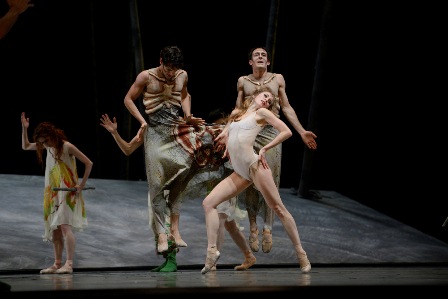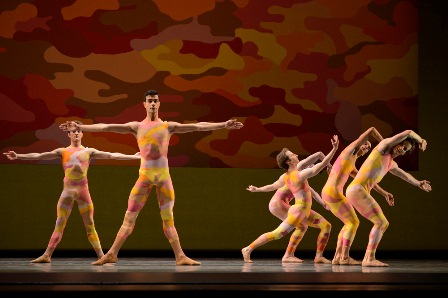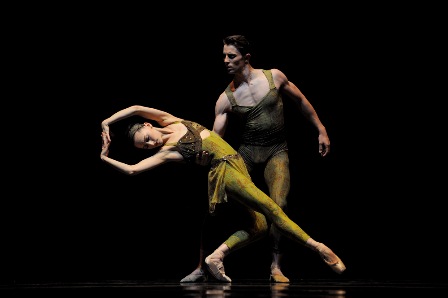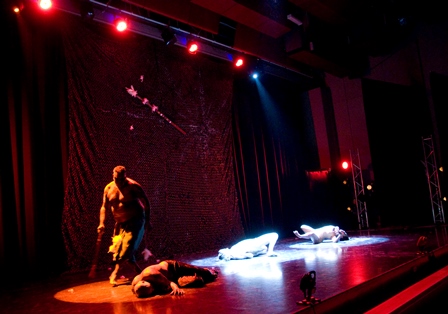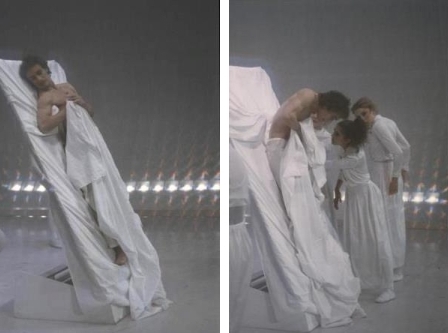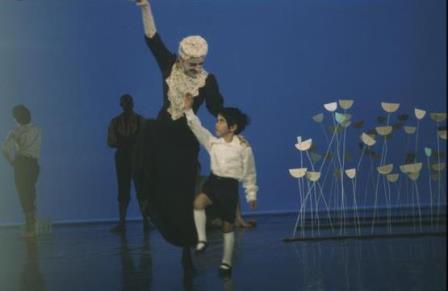15 March, Brown Theater, Wortham Center, Houston, TX
Houston Ballet’s most recent program had the slightly confusing title of The Rite of Spring when in fact it was a triple bill in which Stanton Welch’s reimagining of Stravinsky’s Rite of Spring was simply the final offering on the program. Nevertheless, it was probably the most anticipated of the three works on show although I’m not sure the extensive media build-up was entirely justified.
Welch dispensed with the narrative of human sacrifice that marked the original, infamous 1913 production of Rite of Spring. His production began in something of a primeval manner with a horde of Neanderthal-looking men whose fearsome arrival onstage caused a band of women to flee the stage, thus establishing a primitive, tribal background to the work. But from there the piece seemed to disintegrate into a mixture of cultural references culminating midway through in some kind of wedding or association between a man and a woman, who for the occasion was bound in white garments by her female friends. Just what happened to the couple later on was not clear to me other than that they danced with the rest of the tribe in a passionate frenzy of movement. The work seemed to peter out at the end.
Nor was it clear just exactly who theses tribes were. Costumes and make-up, which included heavy body markings, recalled Aztec ornamentation, a least to me, although there were times when the grass skirts of Polynesia and Melanesia seemed to surface. Heavy, black eye make-up sometimes made the dancers look like they were wearing sunglasses and at other times made their eyes look quite red as though they had been caught in a camera flash. I thought overall the costume/make-up design was considerably overwrought.
This stood in sharp contrast to two magnificent backcloths created from two paintings by Australian indigenous artist Rosella Namok. Namok’s works, ‘Stinging Rain’ and ‘Marks on the Sand, After King Tide’, were beautifully enlarged by Houston Ballet’s backstage team. They had a strong but simple message and it is curious that Welch, according to all press material and published interviews, chose her work because he thought it had a universal quality to it. Well that’s just what Welch’s production didn’t have. It lacked a simple, strong message and a clear sense of focus and, with its myriad of references to other cultures, couldn’t be called universal.
Choreographically Welch worked very closely with the music and there was scarcely a note that didn’t have a corresponding step. Everything looked very busy and as a result the Stravinsky score sounded quite different. To me it seemed to have lost its integrity.
Creating a new Rite of Spring will always bring out a very personal side of any choreographer it seems. The Welch production was not to my liking I’m afraid and I’m beginning to suspect that the versions that work best for me maintain the links to the original narrative or else diverge entirely from it. Welch was unable to establish a new, satisfying pathway or a link to the old one.
The evening opened with Mark Morris’ Pacific danced to Lou Harrison’s Trio for Violin, Cello and Piano. It seemed a little like a religious celebration possibly because of the constant use of uplifted arms and the placing of the hands in front of the body, palms facing each other, as if holding an devotional item between the hands, or as if in a kind of open praying gesture. Morris’ choreography followed the impetus of the music but the constant bending to the floor as if in homage to something (the music?) also emphasised a kind of religiosity.
Edwaard Liang’s Murmuration, especially created on Houston Ballet and receiving its world premiere in this program, began with a single female dancer moving slowly down a diagonal, But just as one began to ponder the serenity with which she accomplished this walk, the stage was filled with dancers. They formed groups broke apart, met and left the stage in a flurry of movement that lasted for the entire first movement of Ezio Bosso’s Violin Concerto No. 1, Esoconcerto. As explained in a program note the title of the work refers to the intricate patterns formed by starlings during flight and the constantly changing choreographic groupings alluded to these patterns.
The second movement consisted of a series of duets which showed Liang’s emphasis on how bodies can work together as they intertwine and contort, and in so doing how they often appear as one. The men hold our attention in the third movement and for a while the women group themselves at the back and watch the men display their athleticism.
Murmuration is beautifully designed. The simple, grey costumes, designed by Liang and Houston Ballet’s wardrobe manager Laura Lynch, move beautifully with the dancers. The pale grey leotards with attached chiffon panels for the women, and the wide legged trousers softy gathered at the waist for the men enhance and never detract from the choreography. The background, which relies on Lisa J. Pinkham’s lighting for its strongest effect, changes from a simple grey-lit cloth in the first movement to what looks like a cascade of fireflies in the second. And as the third movement progresses the fireflies turn to small white shapes (of paper I guess) falling softly to the ground.
Murmuration deserved the ecstatic reaction it received from the audience at the performance I attended although there were times when I thought there was a little too much repetition in the choreography.
Michelle Potter, 18 March 2013
